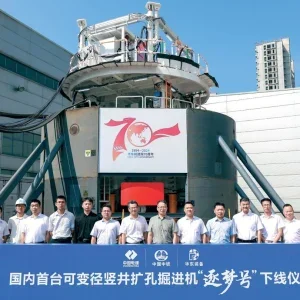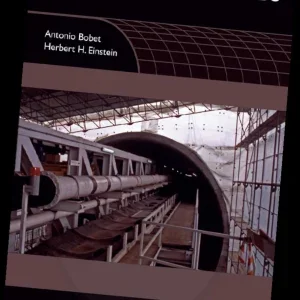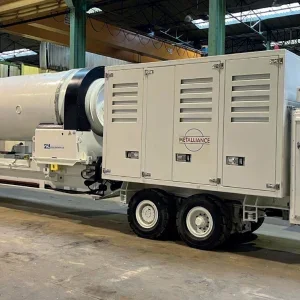Construction work is under way on a tunnel in Hong Kong that features some notable departures from the norm in that region, both in terms of the chosen method and the excavation machinery used. At HKD 18.2bn (USD 2.35bn) it’s also the largest design and construction contract the Hong Kong special administrative region (SAR) government’s Highways Department has ever awarded.
The Tuen Mun-Chek Lap Kok Link (TMCLKL) has the aim of improving road travelling time and easing congestion in the western New Territories and will see the construction of twin 5km-long subsea tunnels and a 3.5km road section.
These will provide the most direct route between Tuen Mun in the western New Territories and the Hong Kong-Zhuhai- Macao Bridge (HZMB) Hong Kong Boundary Crossing Facilities (HKBCF) at Chek Lap Kok on Lantau Island, where the Hong Kong International Airport (HKIA) is located. The tunnel project will also serve as an alternative access road to the HKIA, in addition to the existing North Lantau Highway.
The project is divided into southern and northern sections, with the northern section featuring the sub-sea tunnels link between Tuen Mun Area 40 and the HZMB/HKBCF and the southern section featuring the road linking HKBCF and the road network of North Lantau.
Along with the aforementioned road and tunnels, the project also includes the construction of a reclamation site; the construction of shafts; the installation of an air quality monitoring system; the installation of fire safety systems; the installation of ventilators and construction of ventilation shafts; and the installation of security systems and other infrastructure-related facilities.
Stakeholders
Aecom Asia was awarded the USD 148m employer’s designer and supervising officer contract for the TMCLKL in late 2011/early 2012. It carried out the design of the project from scheme to detail stage and made recommendations to the Highways Department on the preferred tunnel option and alignment.
Aecom completed the full design, which was subsequently regarded as the reference design for the contractor to price for the tender.
In July 2013 the design and build contract was awarded to Dragages- Bouygues joint venture (DBJV), who subsequently engaged Ove Arup & Partners Hong Kong Ltd to be its designer and carry out changes proposed by the contractor.
The 50km-plus HZMB project (Tunnels & Tunnelling International March 2011), which TMCLKL will join, is one of the largest fixed links ever realised and comprises bridges, causeways, artificial islands and tunnels, including 6km of immersed tube tunnel.
Immersed tubes are the usual method of underwater tunnel construction in Hong Kong and were initially considered for the TMCLKL project. However, now TBMs are being used – marking the first use of TBMs to construct a sub-sea road tunnel in the region.
Environmental mitigation
This decision was made to save dredging and the disposal of an estimated 11Mm3 of marine sediment. The need to avoid the diversion of several existing power cables serving the Hong Kong International Airport was also a factor.
It is also expected that this method will reduce the impact on the environment, water quality and marine ecology (the endangered Chinese white dolphin is present in the area, with WWF stating that only 62 individuals remain in Hong Kong).
"During the planning stage an Environmental Impact Assessment was conducted and an Environmental Permit (EP) was obtained pursuant to relevant environmental protection regulations prior to the award of the contract," said Siney Kwok, deputy corporate communications director at Dragages Hong Kong.
"Environmental mitigation measures as required under the EP are being adopted during the construction stage," she added. "The use of TBMs to construct the tunnels was driven primarily by environmental concerns and the need to avoid disruption to marine traffic."
The project comprises the design and construction of dual, two-lane tunnels, approximately 5km long, of which around 4km will be sub-sea. Each tunnel will measure 14m in diameter.
Reclamation work
The scheme also includes reclamation work to form a 16.5 hectare platform for the tunnel’s northern landfall at Tuen Mun Area 40. The southern landfall for the tunnels is formed by the reclamation of an artificial island, which is being constructed under a separate contract.
The main contractor for the artificial island is China Harbour Engineering, while Ove Arup & Partners Hong Kong Ltd is the consulting engineer.
Work on the northern landfall will include the construction of a ventilation building, a 530m-long approach tunnel (constructed by a combination of TBM and cut and cover) and a launch shaft for the project’s two 14m diameter Herrenknecht TBMs. The launch shaft is being constructed using diaphragm walls (100m x 50m x 22m).
Construction work started on the reclamation for the northern landfall in 2013 and is expected to be complete by early 2016.
In the south there will be another ventilation building, a 670m-long approach tunnel (constructed by cut-and-cover methods, with diaphragm walls) and TBM retrieval chambers.
The two ventilation buildings have been designed to qualify for BEAM Plus Gold rating.
The sub-sea excavation will encounter highly variable, soft and mixed ground conditions, said Kwok, citing reclamation fill, marine deposit, alluvium (sand, clay and silt), weathered rock and granite.
And the two identical slurry Mixshield TBMs that will deal with these ground conditions will feature sophisticated new technologies – Mobydic and Snake – developed by Bouygues Construction’s research and development department.
Both technologies were developed in order to reduce the need for manual operations in hyperbaric conditions.
Mobydic is a system of sensors incorporated into the disc cutters in the heads of the TBMs. These enable the ongoing monitoring of wear to the cutters while allowing real-time monitoring of the rock faces.
Snake is a remote control exploration arm equipped with a high-pressure jet, which will clean the TBM cutterheads and eliminate clogging, to enable them to be inspected.
Spoil will be extracted through the TBM slurry system and separated at an on-site slurry treatment plant for disposal off-site.
One of the two 14m diameter TBMs was delivered early this year, while the other is due to arrive in August.
Extra machinery for larger bore
Already in action, following delivery last December and its launch on March 25, is a third Herrenknecht TBM, which is being used to construct one of the approach tunnels to provide for an additional climbing lane.
This monster-sized TBM – it has a 17.6m diameter – is being used to construct the northbound exit tunnel at the northern landfill. This method is being used to create a larger diameter bore in order to accommodate three lanes, thus providing an additional climbing lane. The gradient here will be about five per cent.
The southbound exit also requires a third climbing lane but this is incorporated in the cut-and-cover design.
The sub-sea tunnels will be segmentally lined with pre-cast reinforced concrete segments with fire protection to the concrete lining and the overhead ventilation slab.
According to Noma Consulting, which was engaged by Ove Arup to lead the detailed design of all the mined and bored tunnel design aspects, the precast concrete lining will consist of nine (including the key) segments with an inner diameter of 12.4m, a thickness of 550mm and a width of 2.2m; and 12 (including the key) segments with an inner diameter of 15.6m, a thickness of 700mm and a width of 1.7m.
The sub-sea tunnels will be connected by cross passages every 100m – 42 sub-sea cross passages and 14 in the approach tunnels.
The cross passages will be excavated using pipe-jacking techniques; possibly with ground-freezing technology to provide a watertight environment to enable these passages to be constructed.
In addition to detailed design of the segmental lining for the northern landfall and the sub-sea tunnel and for the mined cross passages, Noma is also responsible for the coordination of interfaces between bored tunnels and cut-andcover structures, such as the launch and retrieval shaft and the ventilation shafts.
New depths
At 50m below sea level the tunnels will be the deepest, as well as the longest sub-sea road tunnels in Hong Kong.
Working at that depth in an environment of up to six times the normal atmospheric pressure is a key challenge as the majority of construction must be carried out in a compressed air environment.
While 50m also constitutes a record depth for the DBJV, the partners have long experience in compressed air works.
The Dragages Bouygues joint venture will adopt a "saturation" technique for maintenance work on the TBM cutterheads. This means that highly experienced saturation workers will stay for up to four weeks at a time in specially designed habitats, thereby undergoing one decompression every four weeks rather than one decompression every day. The aim of this approach is to maximise health and safety while also enhancing project efficiency, according to a spokesman for the JV.
There are no restrictions on construction work other than the normal statutory and environmental requirements, said Kwok, and the project is targeted for completion in 2018






